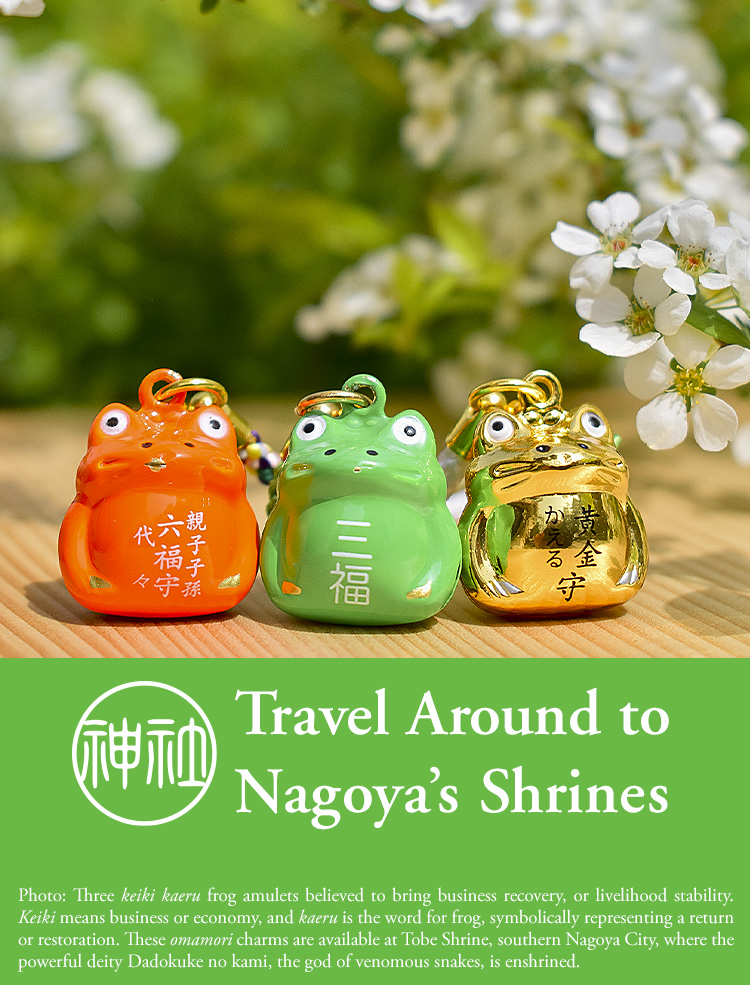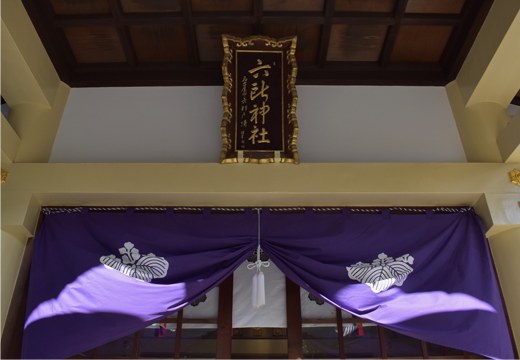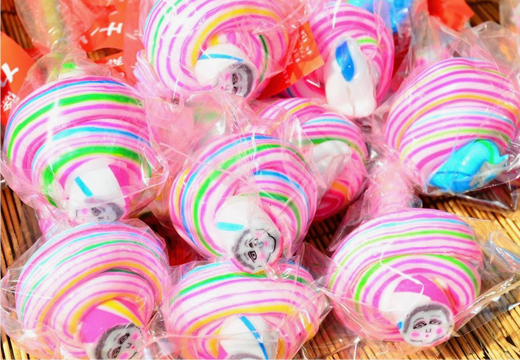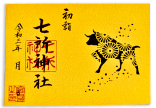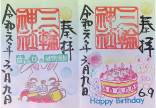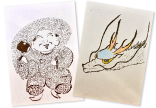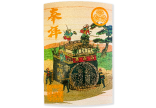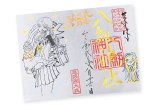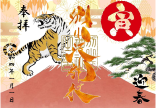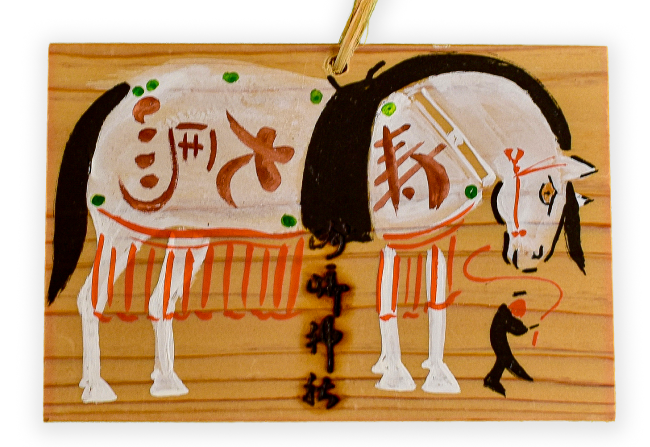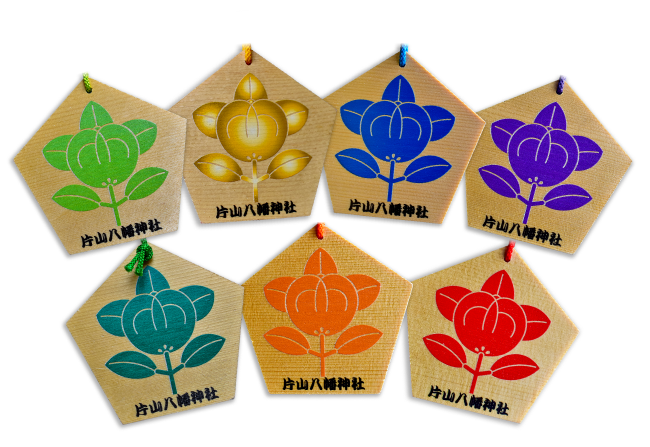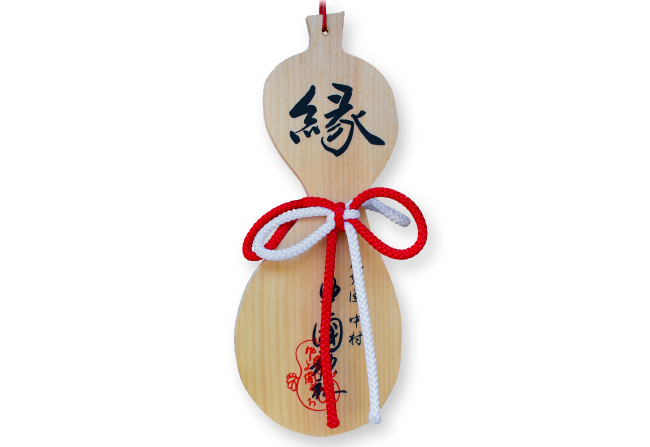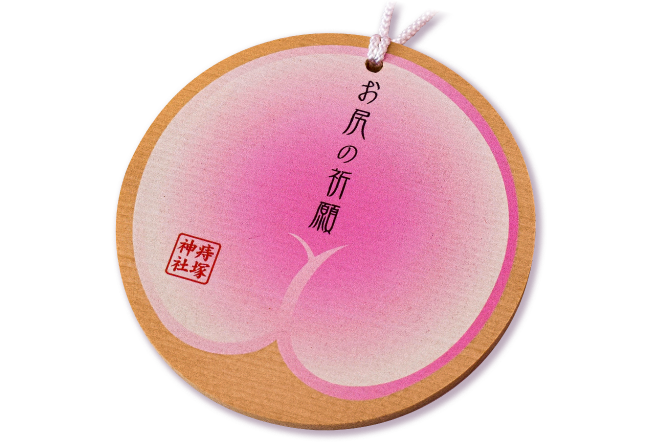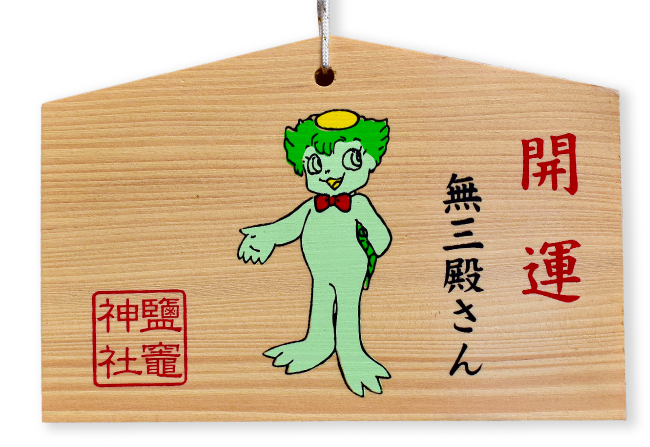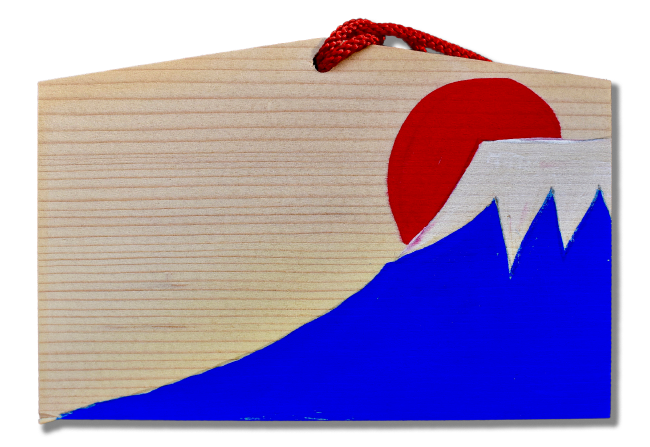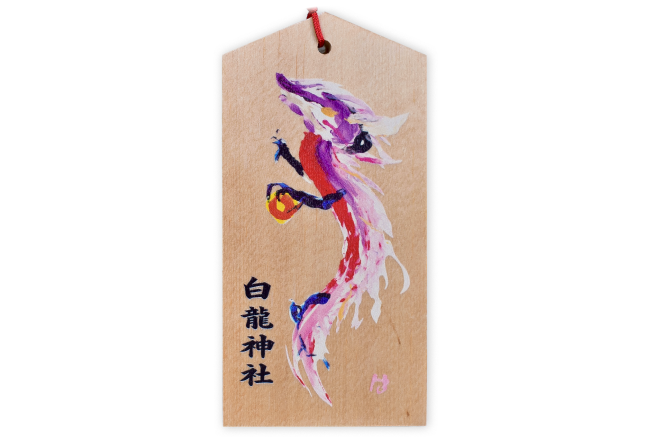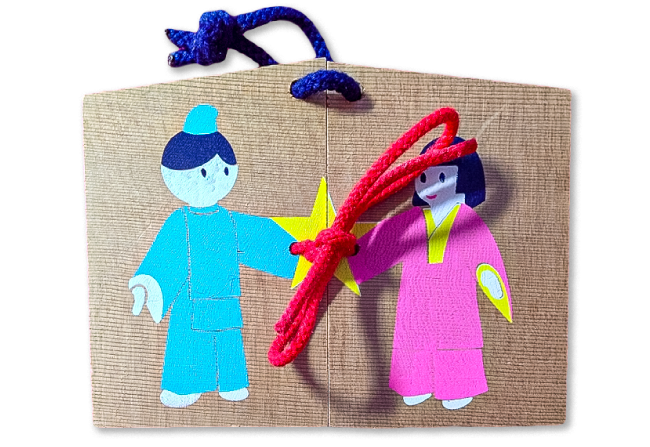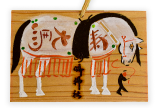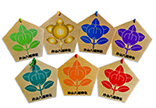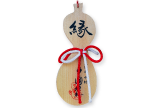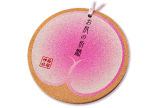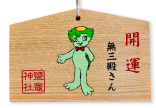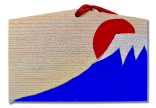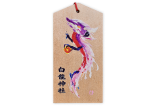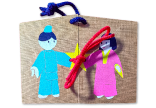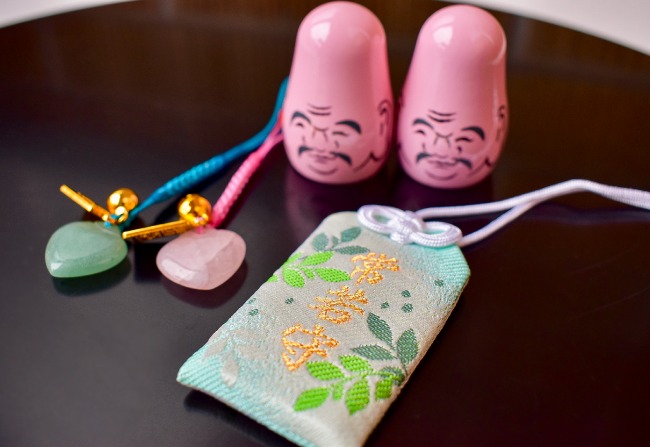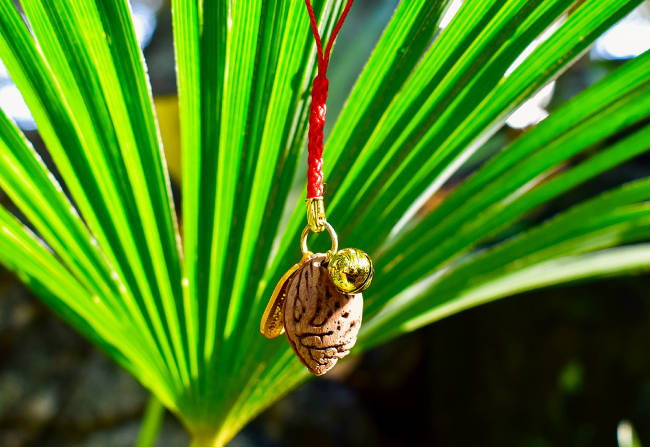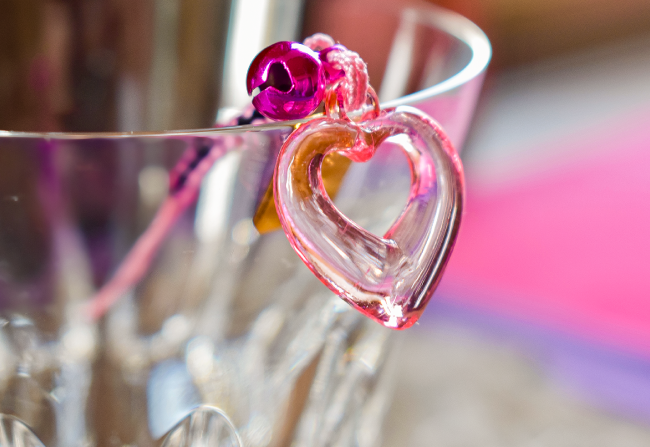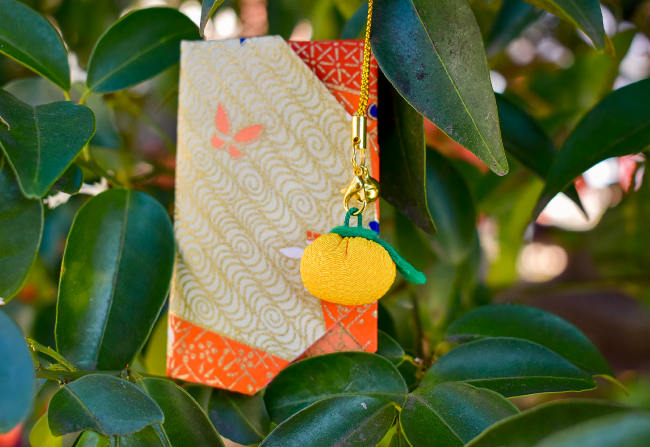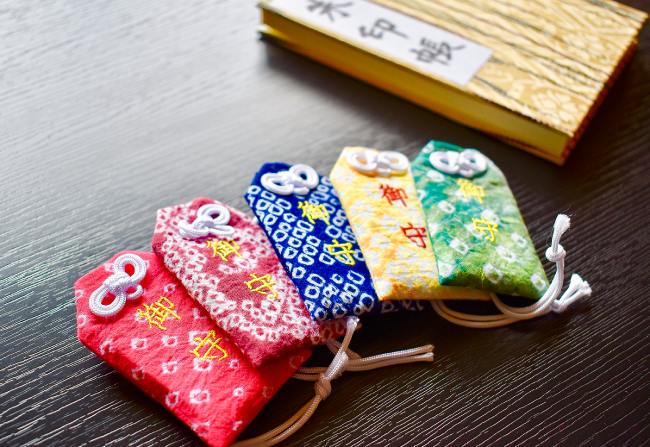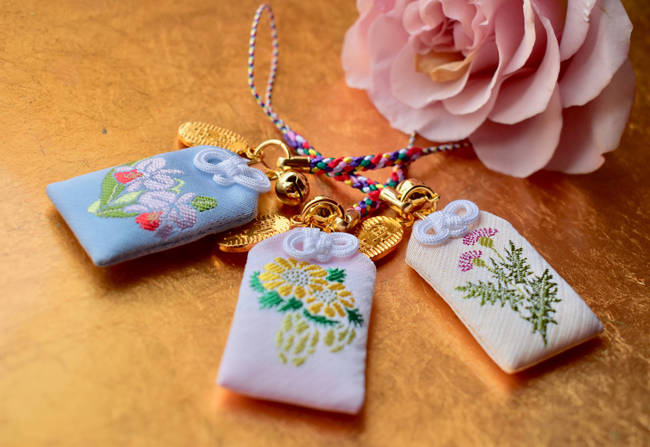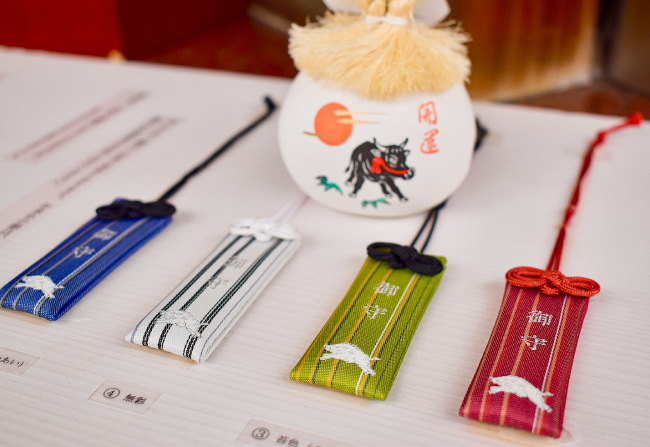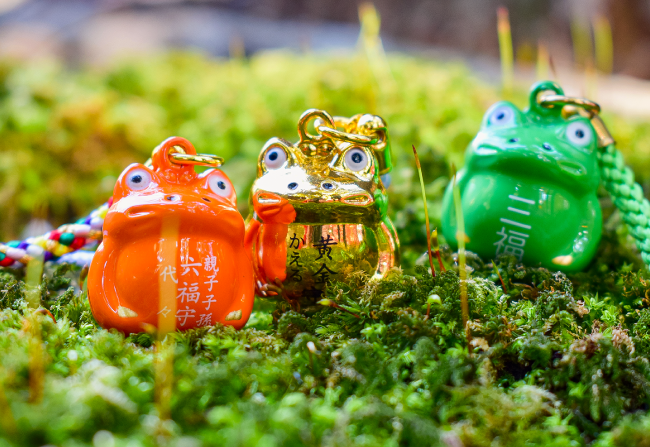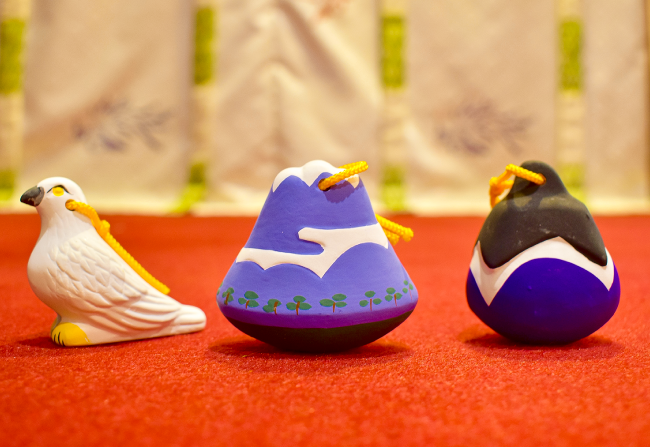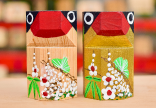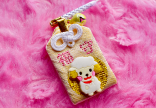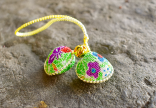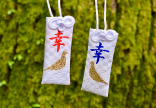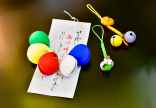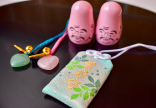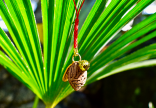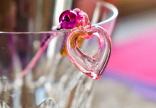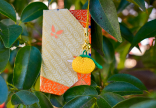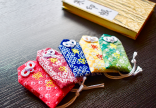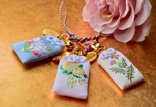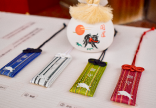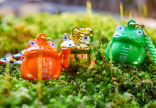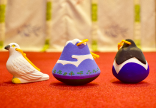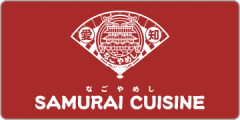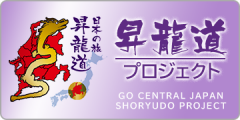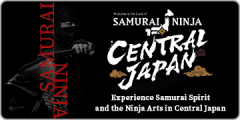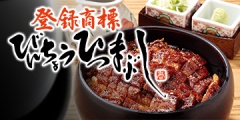- Home
- Special Features
- Travel Around to Nagoya's Shrines
Japanese families have traditionally had a kamidana, or household Shinto altar, in their homes. Changes in lifestyles, such as the trend toward living in apartments, have led to the disappearance of these altars from many homes.
However, when you venture outside, you will find many such shrines.
We hope that you, coming from various parts of the world, will encounter deities in Nagoya, who always watch over us, in the belief that such an opportunity will bring you joy.
WORSHIP
Japanese people have long lived side by side with nature through farming and fishing lifestyles.
Nature brings us blessings, but sometimes rages in all its fury. People in this country have long accepted that both aspects are brought about by a great power, and have revered this invisible power in the form of deities. Shrines are places that provide them with comfort.
You're invited to explore shrines in Nagoya, a city boasting a large number of shrines.
First, let’s learn the basics of worshipping at shrines.
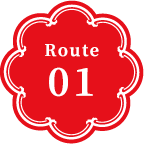
Torii gate
The procedure of worshipping at a shrine begins with walking through a torii gate. Since beyond the gate lies the realm of the deity, you should make a bow in front of the gate.
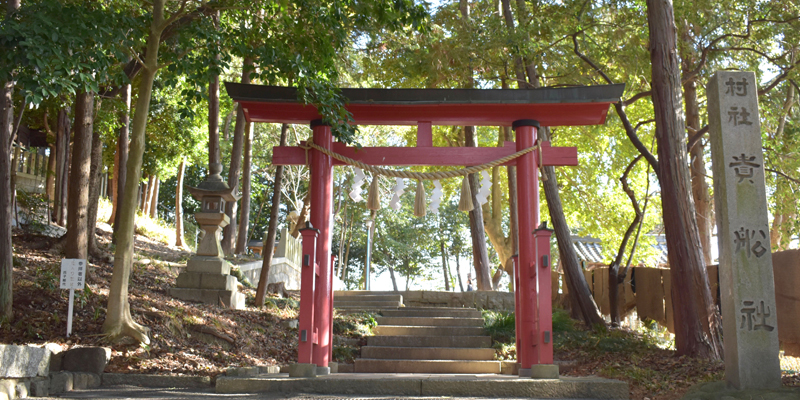
Kifune-sha Shrine
Etiquette
Before passing through the torii gate, bow once. Then proceed along the approach while avoiding walking in the center of the path. Also, when you leave the shrine precincts after you have worshipped the deity, make a bow facing toward the shrine's main hall.
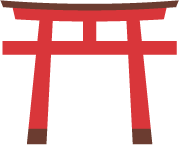
Komainu
(lion-dog guardian statues)
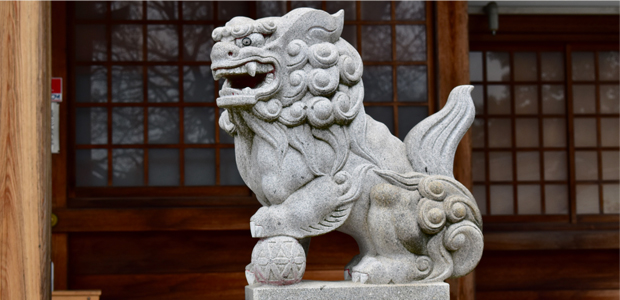
Introduced into Japan from India or Persia, komainu are creatures that keep evil at bay. Coming in pairs, the one with an open mouth is a shishi (lion) while the other with a closed mouth is a komainu (dog). The presence of such an asymmetrical pair of creatures is unique to Japan.
The komainu at Ikatsu Hachimangu Shrine in the photos have been handed down over the generations and are designated as an important cultural property.
Ikatsu Hachimangu Shrine

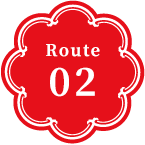
Temizuya
(purification font)
Before worshipping at a shrine, our ancestors washed and purified their bodies by bathing in a river or the sea. As a vestige of these earlier times, shrines today have a place for washing hands to purity the body and soul.
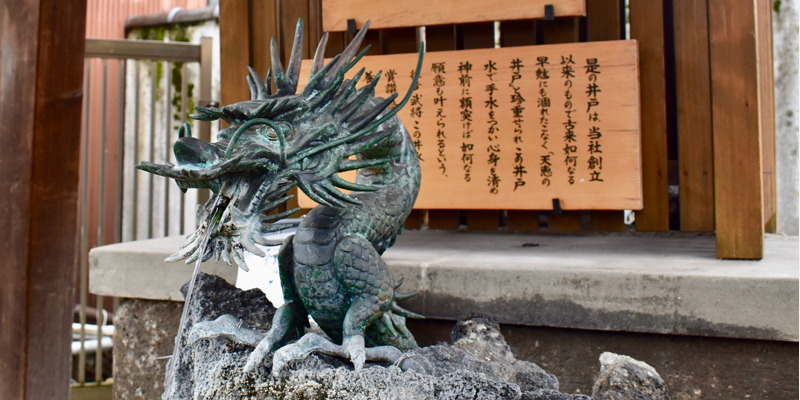
Matsuyama Shrine
Etiquette
Hold the ladle in your right hand, pour some water over your left hand to rinse it, and then rinse your right hand. Pour water from the ladle into your cupped left hand to rinse your mouth. (Spit out the water from your mouth outside the font.) Lastly raise the ladle vertically, with the ladle cup upward, to rinse the ladle handle with the remaining water.
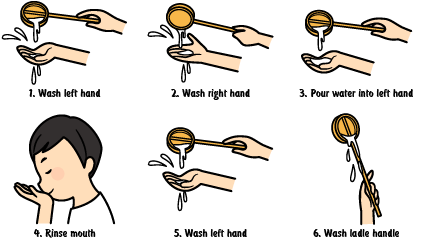
Shinkyo (sacred bridge)
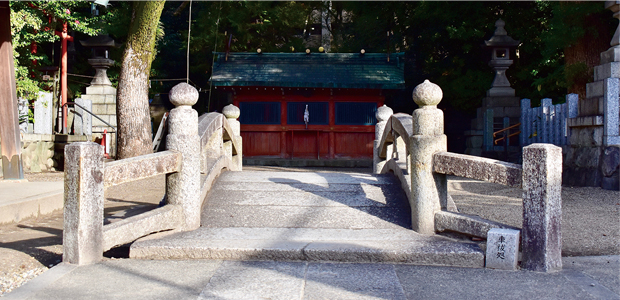
In the grounds of large shrines, you will sometimes find ponds or streams crossed by bridges. These bridges, as with torii gates, serve as boundaries between the human world and the sacred area where the deity resides. While traversing them, worshippers prepare themselves mentally to meet the deities.
Gokiso Hachimangu Shrine

Shimenawa
(Shinto sacred ropes)
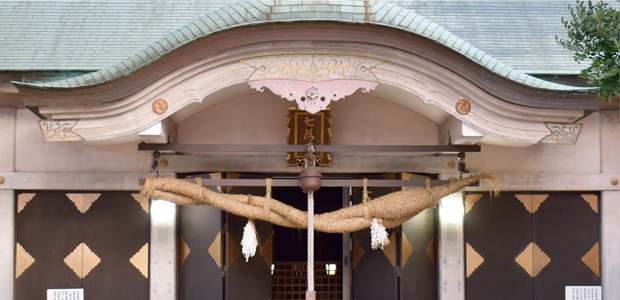
Shimenawa refers to a large sacred rope twisted to the left, hanging in front of the shrine’s main hall. It tells us that the area ahead is a sanctuary that we may not approach casually. This magnificent shimenawa belongs to Hichisho-sha Shrine.
Hichisho-sha Shrine

Banpei (wooden screen)
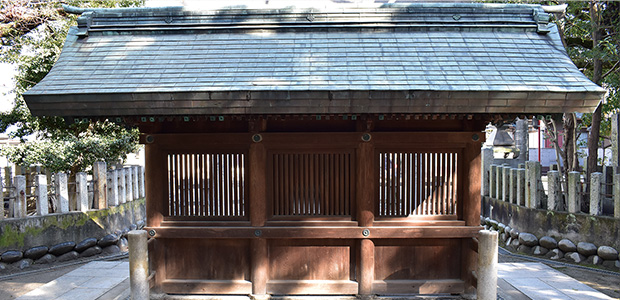
Unique to the Nagoya area, Banpei wooden screens serve to block the deity from direct view.
Hira Rokusho Shrine

Suzu (Shinto bell)
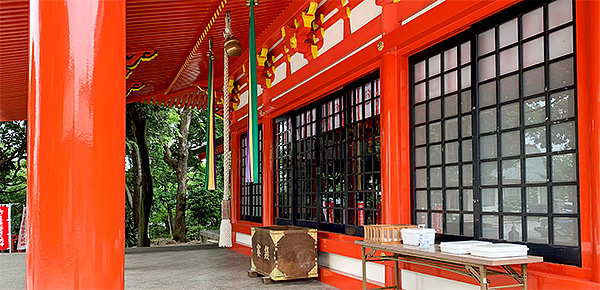
A cord with a bell attached is draped over the entrance to a hall of worship. The bell produces a sound when agitated three times. This time-honored custom originates from the belief that vibrating air summons a deity. The sound of the bell bestowed with divine power, rather than the bell itself, expels evil spirits.
Toyofujiinari Shrine

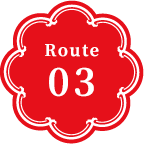
Saisen
(monetary offering)
People offer money into a wooden box in front of the hall of worship. This is a ceremony of ritual purification whereby the anxiety and suffering in our daily life will be brought to the deity along with the offering. The offering amount is left to your discretion.
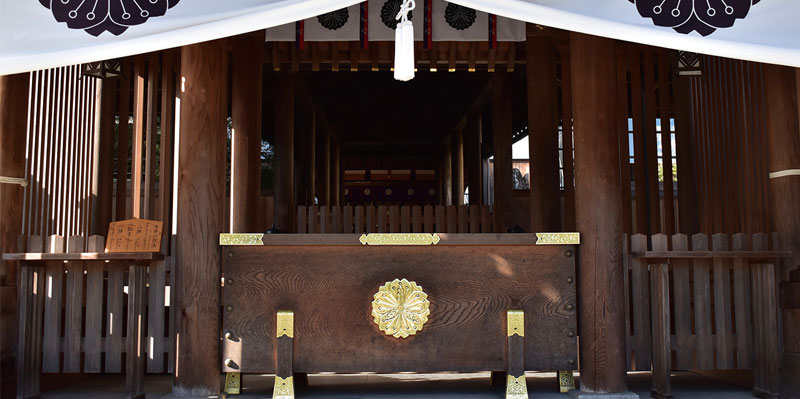
Yagoto Shiogama Shrine
Etiquette of worshipping a deity
- ・Make a bow to the deity (greeting)
- ・Clap your hands (to ward off evil spirits)
- ・Then keep your hands pressed together and pray.
- ・Put your hands down and lastly bow to the deity again.
- ※Two bows, two claps, and a bow comprise the most common prayer procedure at a shrine. This, however, does not necessarily need to be followed, since the number of bows and claps differs depending on the shrine.
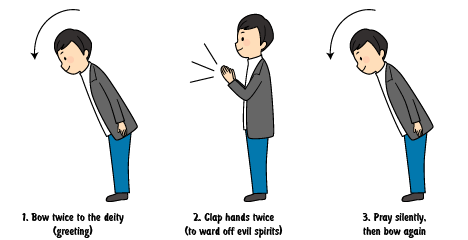
Inari
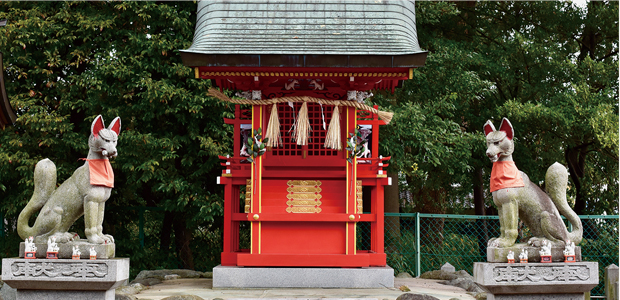
In many Inari shrines, a pair of fox statues flank the entrance or main hall to guard the shrine.
While opinions differ, the deity bestows blessings upon worshippers mainly in the form of a bountiful harvest or business prosperity. “Inari” means that one’s will (“i” in Japanese) will be achieved (“nari” or “naru”), so worshippers have faith in the deity for the fulfillment of their dearest wish.

Haraegushi
(purification wand)
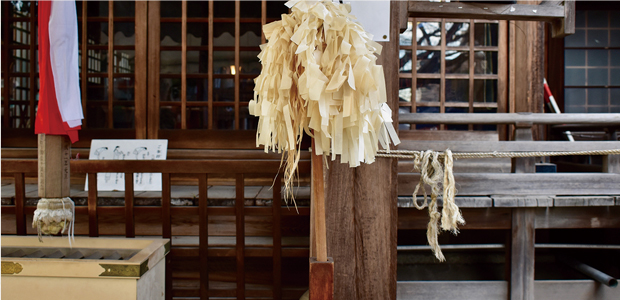
A haraegushi is a ritual article that Shinto priests use for purification. Priests wave the haraegushi to the left, right and left again over persons or their objects to ward off evil spirits. Some shrines have a haraegushi placed at the entrance to the hall of worship, where worshippers may use it to purify themselves.
Shiogama Shrine


After you have worshipped the deity, face toward the torii gate and make a bow.
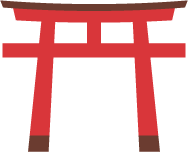
BEGINNING
Visit Atsuta Jingu, the best place to start your tour of shrines in Nagoya
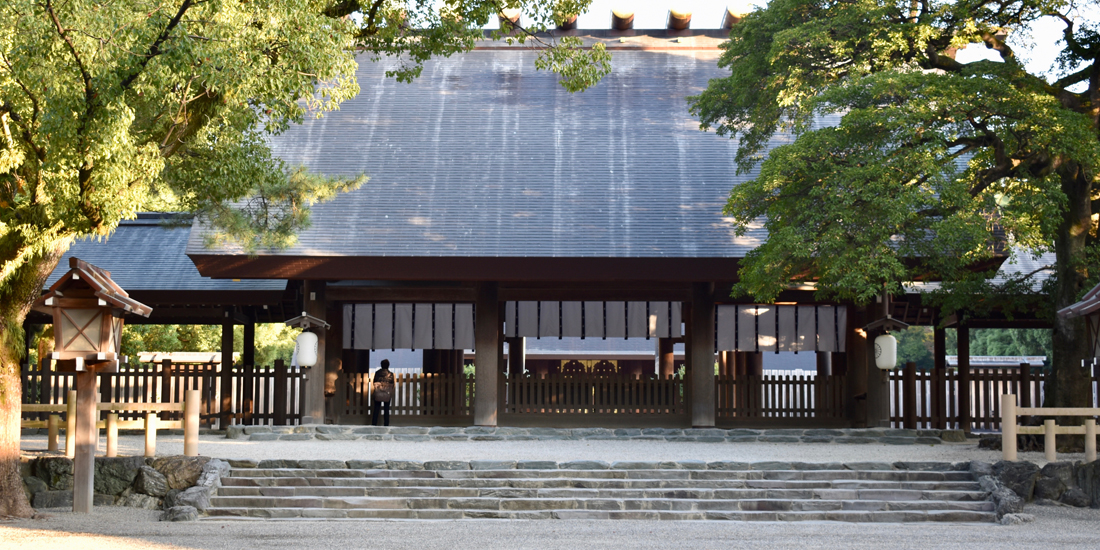
A vast sanctuary spanning nearly 200,000 square meters―Peaceful and pure, allowing you to forget your daily life
- Established in 113, boasting a long history, Atsuta Jingu (Atsuta Shrine) is dedicated to the Kusanagi-no-tsurugi sword, one of the sacred treasures that have been handed down in the Imperial household of Japan for generations.
- Yamatotakeru-no-Mikoto was an Imperial prince of ancient Japan. The young Imperial prince and a princess of Owari Province (today’s Nagoya) were meant for each other and got married.
Of no mean military prowess, the prince subjugated the tumultuous country and went down in history as the greatest hero of ancient Japan.
After his death, his Kusanagi-no-tsurugi sword was enshrined by the Princess, and this is how the history of Atsuta Jingu began. Because of its association with the sword, the shrine has come to house a large number of treasured swords. To unveil them to the wider public, Kusanagi-kan, a treasure trove of swords, and Kusanagi Hiroba (plaza) opened in 2021.
Atsuta Jingu is also known as "Horai Island." Horai refers to a paradise of perennial youth and immortality that human beings earnestly wish for.
Revered as a special sanctuary, the shrine has been visited by many worshippers praying for peace in Japan and a healthy long life.
-
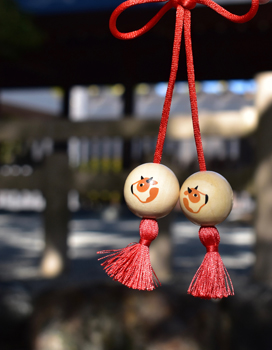
1 -
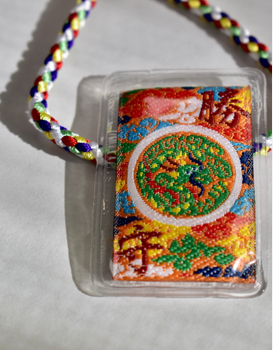
2 -
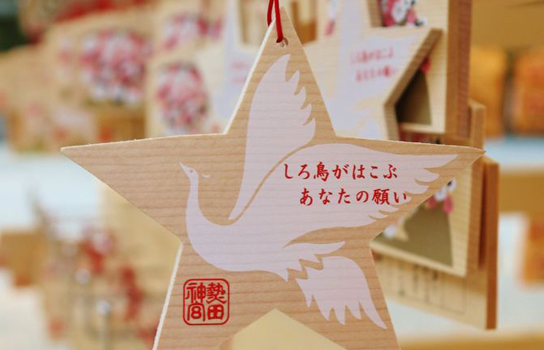
3
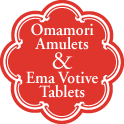
- 1. Etodama: A pair of pretty wooden balls bearing the Chinese zodiac sign of the year.
- 2. Kachimori: An amulet made with patterns of a victory dance costume. As for the braid that comes with the amulet, you may wish to loop it around your wrist or carry it with you.
- 3. Star-shaped ema. The votive tablets are connected to a romantic legend, which has it that Yamatotakeru-no-Mikoto (Prince Yamatotakeru) turned into a swan upon his death and returned to Princess Atsuta.
Exploring the shrine precincts
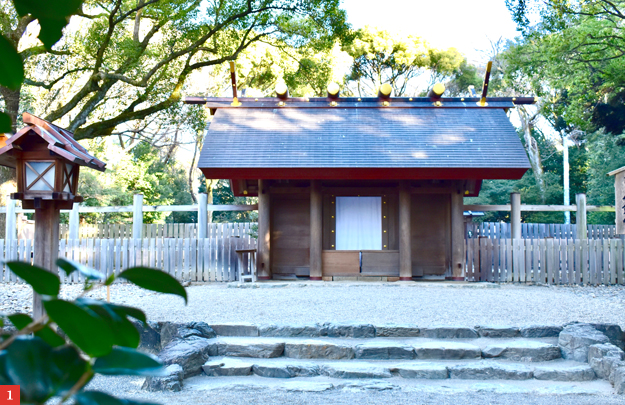
-
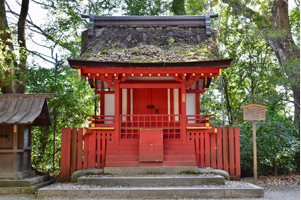
2 -
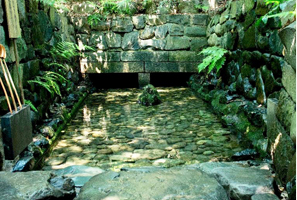
3
- 1. Bekku (annex shrine)-Hakkengu: Dedicated to the same deity as Hongu (main shrine), where the Kusanagi-no-tsurugi sword is enshrined, Bekku is the next highest class after the main hall.
- 2. Minami-shingu-sha: This shrine is dedicated to a deity for warding off plagues and other disasters, and is the only vermilion-lacquered sanctuary building in the precincts of Atsuta Jingu.
- 3. Shimizu-sha: Located on the Kokoro-no-komichi footpath that leads to the back of Hongu, this shrine has a sacred spring flowing out from behind the building. It is said that by washing your skin with the spring water, you will become more beautiful. In the center of the spring is a rock believed to be a part of the tomb of Princess Yang Guifei, known as one of the greatest beauties in ancient China.
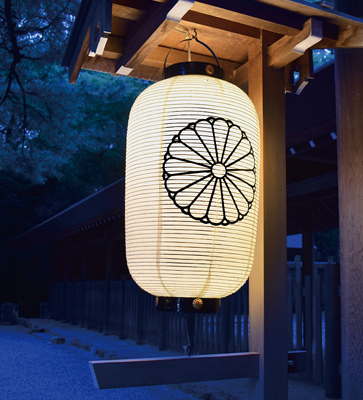
-
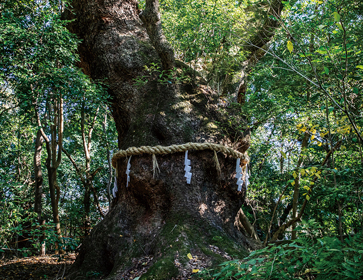
5 -
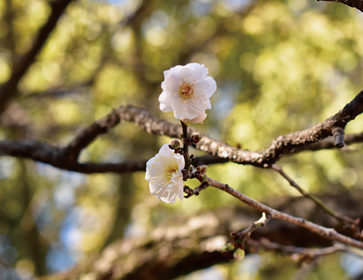
6
- 1. Bekku (annex shrine)-Hakkengu: Dedicated to the same deity as Hongu (main shrine), where the Kusanagi-no-tsurugi sword is enshrined, Bekku is the next highest class after the main hall.
- 2. Minami-shingu-sha: This shrine is dedicated to a deity for warding off plagues and other disasters, and is the only vermilion-lacquered sanctuary building in the precincts of Atsuta Jingu.
- 3. Shimizu-sha: Located on the Kokoro-no-komichi footpath that leads to the back of Hongu, this shrine has a sacred spring flowing out from behind the building. It is said that by washing your skin with the spring water, you will become more beautiful. In the center of the spring is a rock believed to be a part of the tomb of Princess Yang Guifei, known as one of the greatest beauties in ancient China.
- 4. A hanging lantern bathes the precincts in faint light at dawn. It bears the noble beauty of a black opal.
- 5. Standing near Shimizu-sha, this huge camphor tree has outlived many human lives.
- 6. Known as “Narazu-no-ume,” meaning an ume Japanese apricot tree that has never borne fruit, albeit producing flowers, this 400-year-old ume tree is now in bloom.
Some of the shrines connected to Atsuta Jingu are located outside its precincts. Stretch your legs and visit those shrines to add more pleasure to your visit to Nagoya
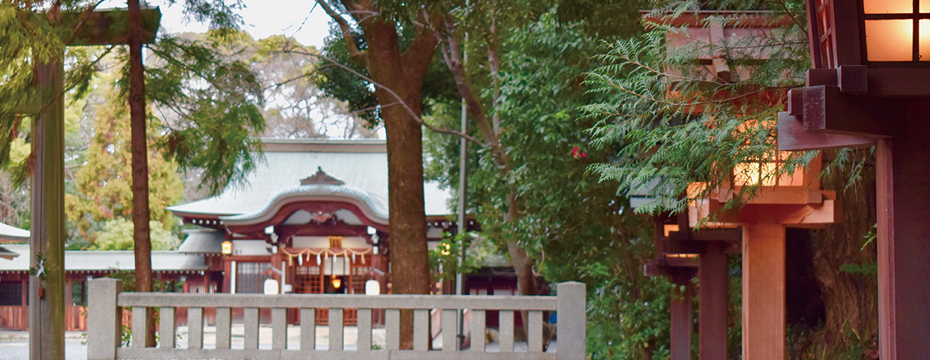
- Hikamianego Shrine
- Closely associated with Atsuta Jingu, it enshrines Miyasuhime-no-Mikoto, wife of Prince Yamatotakeru-no-Mikoto. This site is said to have been that of the Princess’s parental house.
-
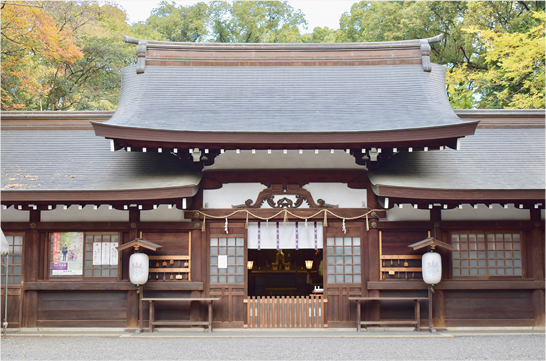
- Takakura-musubi-miko Shrine
- Enshrining the ancestral deity of the Owari clan (the Nagoya area today), this shrine is worshipped as a deity of child-rearing.
-
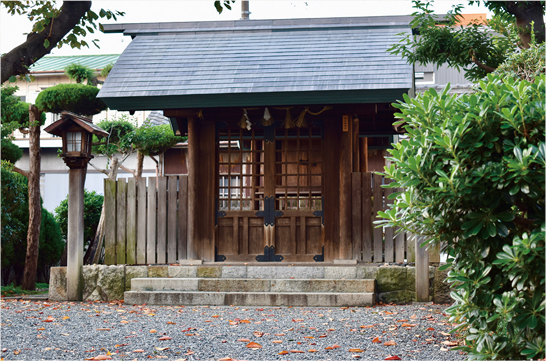
- Rei-no-mimae-sha Shrine
- Enshrining the deity of entertainment. It is said that there was once a custom of purifying oneself at this shrine before going on to worship at Atsuta Jingu.
POWER ANIMALS
While touring shrines in Nagoya, you will be surprised to see the diversity of the shrines dedicated to animal deities―in locations ranging from business districts to corners of elegant residential streets, peaceful farming areas, and secluded holy sites that are difficult to reach. Visiting such a variety of shrines in Nagoya will give you the impression of traveling throughout Japan, a fascinating experience.
-
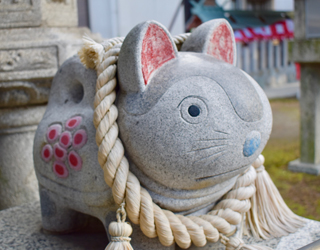
Ooi Shrine
Very prolific, the dog deity is believed to bestow divine blessings for easy delivery
-
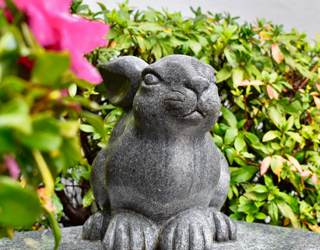
Sukunahikona Shrine
This small shrine is dedicated to a deity of medicine symbolized by a rabbit
-
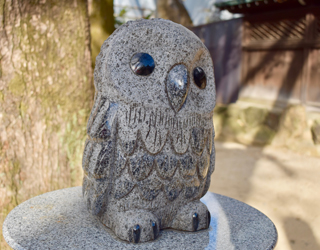
Takamu Shrine
At this shrine for fulfilling love, you will meet an owl deity that wards off troubles and hardship.
-
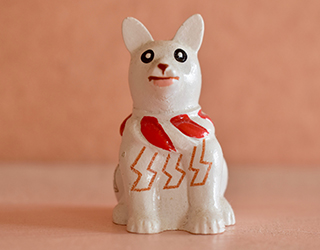
Inu Shrine
This shrine is dedicated to the Dog King that protected the village against flood damage. Drawing a Dog King omikuji fortune is also recommended.
-
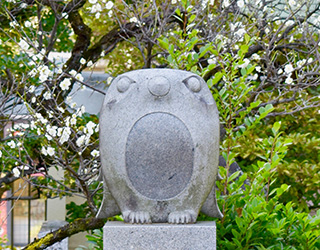
Shimada Shrine
This is a deity of a bird called an “uso,” or bullfinch, who turns people’s mistakes and faults into lies, as implied by the name (“uso” also means “lie.”)
-
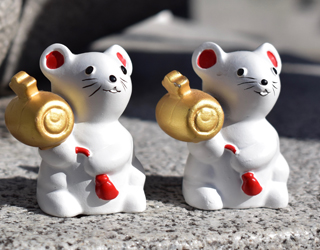
Kogane Shrine
(in the grounds of Yamada Tenmangu Shrine)These Kogane mice, wielding a small golden mallet, are believed to bring economic fortune as messengers of the deity. Kogane mouse omikuji fortunes are available at the shrine.
-
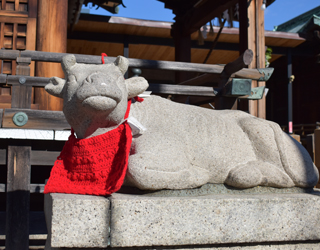
Susanoo Shrine
This shrine enshrines deities for warding off epidemics and sundering evil relationships. In the precincts is a cow deity sculpture, commonly seen in Japan; nade-ushi, meaning “stroking cows,” is a standard procedure, since through this action our prayers will be answered.
-
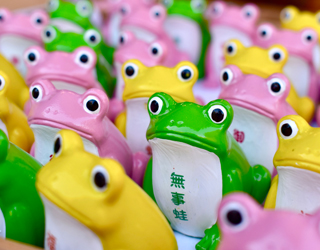
Tobe Shrine
Frog-shaped omikuji fortunes. A frog is an auspicious animal for safe journeys, as anecdote has it. (“Kaeru,” the term for “frog” in Japanese is phonetically the same as that for "return.")
-
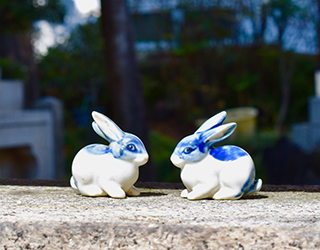
Miwa Shrine
Cute rabbit deity sculptures welcome you here and there. Looking for them is a part of the fun of worshipping at this shrine. Omamori amulets and ema votive picture tablets are all designed with the rabbit deity.
-
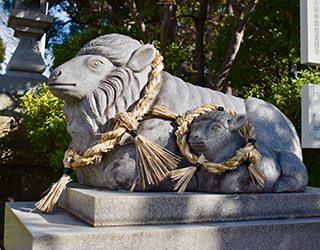
Hitsuij Shrine
This shrine is dedicated to the deity of fire. In its precincts is a sculpture of parent and child sheep, which offers divine blessings for family protection. Cute sheep can also be found at Temizuya (purification font) and on ema (votive picture tablets).
-
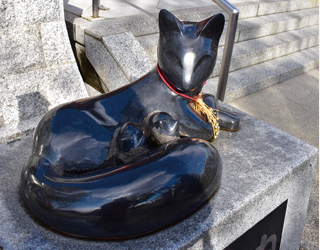
Ikutama Inari Shrine
Pay a visit to worship this good-luck fox cuddling a little fox with an affectionate gaze.
-
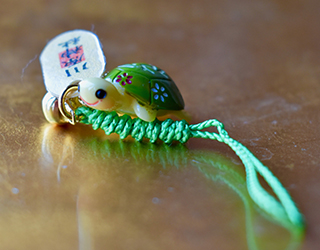
Kawahara Shrine
Turtles living in the pond at this shrine are considered deities, who sometimes stray into nearby houses. They should then be entertained with sake so that they can be happily inebriated before returning to the pond, according to a folktale handed down from olden times. The cute turtle in the photo is an amulet.
POWER OF THE SPIRITS
Now that you have visited Atsuta Jingu, where the Kusanagi-no-tsurugi divine sword is enshrined, next we will guide you to the city center area.
Having been deified, the princes and princesses in the legends watch over us as deities who bestow many divine blessings upon us.
Legend of the Prince
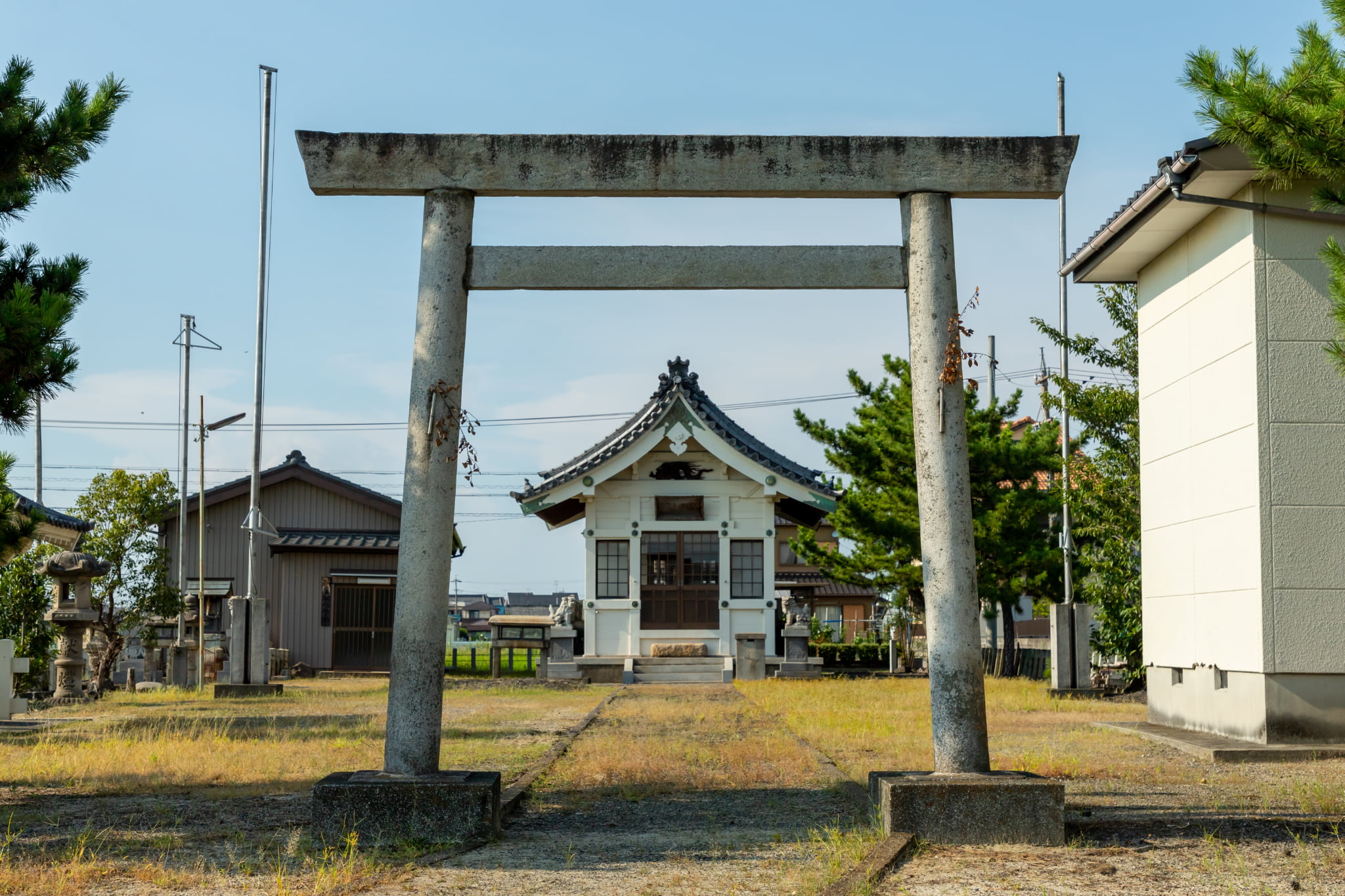
Atsuta-sha Shrine
At this shrine, Yamatotakeru-no-Mikoto is worshipped as a deity. A large torii gate towers above the surrounding fields and paddies. Its pure white sanctuary building is reminiscent of a swan in exuberant spirits.
-
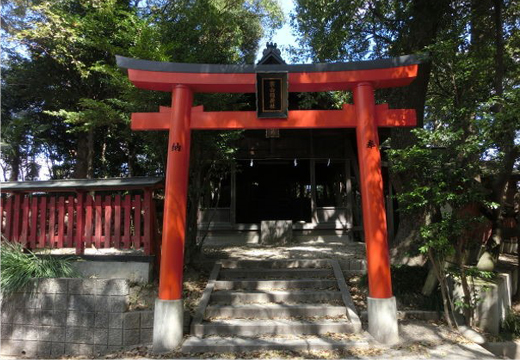
Itsukiyama-inari-sha Shrine
The place where Yamatotakeru-no-Mikoto and his wife were joined in marriage. Since this place faced the sea at that time, they woke to the sound of waves on the morning after their nuptial night. Today, the place is still called “Mezame-no-sato” (village of waking.)
-
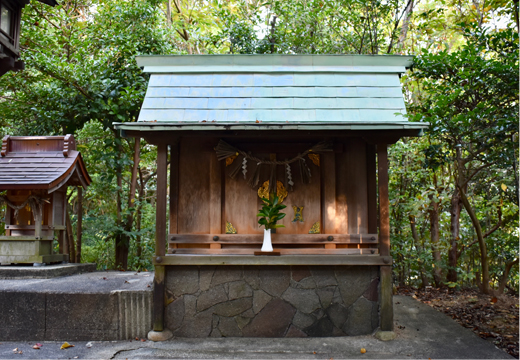
Tachibana Shrine
This shrine concerns an event that happened before Yamatotakeru-no-Mikoto met Miyasuhime-no-Mikoto. On his way to conquer the east, he was caught in a storm on the sea. His then wife Ototachibana-hime, who was accompanying him, sacrificed herself to the sea, quelling the anger of the sea god. This shrine is sacred to the memory of Ototachibana-hime.
Dragon Power
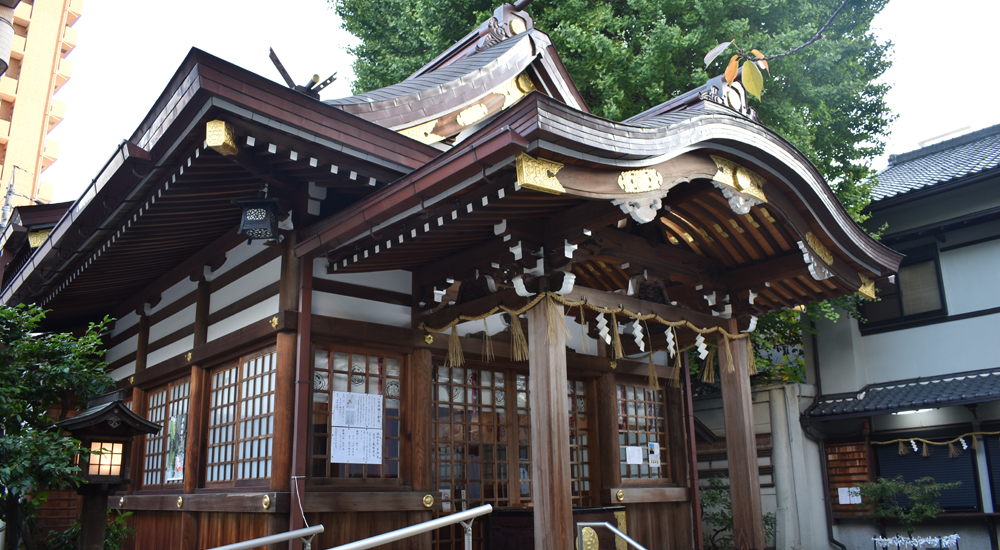
Hakuryu Shrine
In ancient times when fever was prevalent, a shrine was erected at the base of a willow tree to the spirit of a deity according to his divine revelation, causing the epidemic to subside. Later, the deity was moved to a ginkgo tree. Since then, the deity has continued to be venerated by people, being affectionately called “Hakuryu san.”
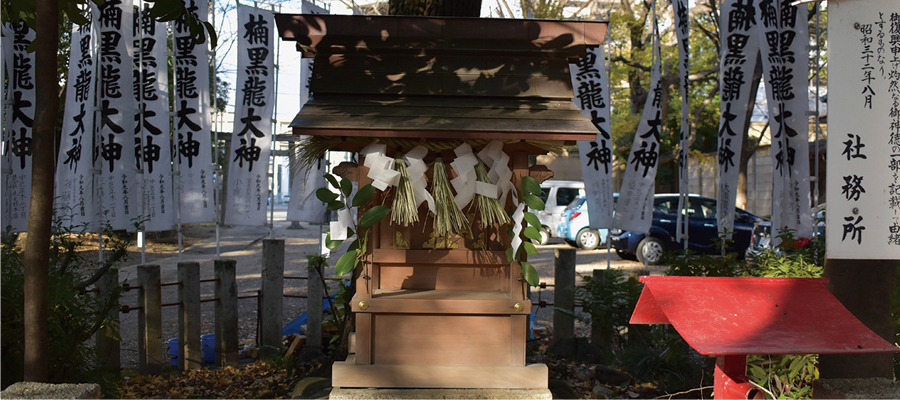
Kuragarinomori Hachiman Shrine
When lightning struck in the area, a married black dragon deity couple landed to dwell in this camphor tree. The deities are said to have brought business prosperity, good luck in relationships, and other blessings to local worshippers.
Storytelling
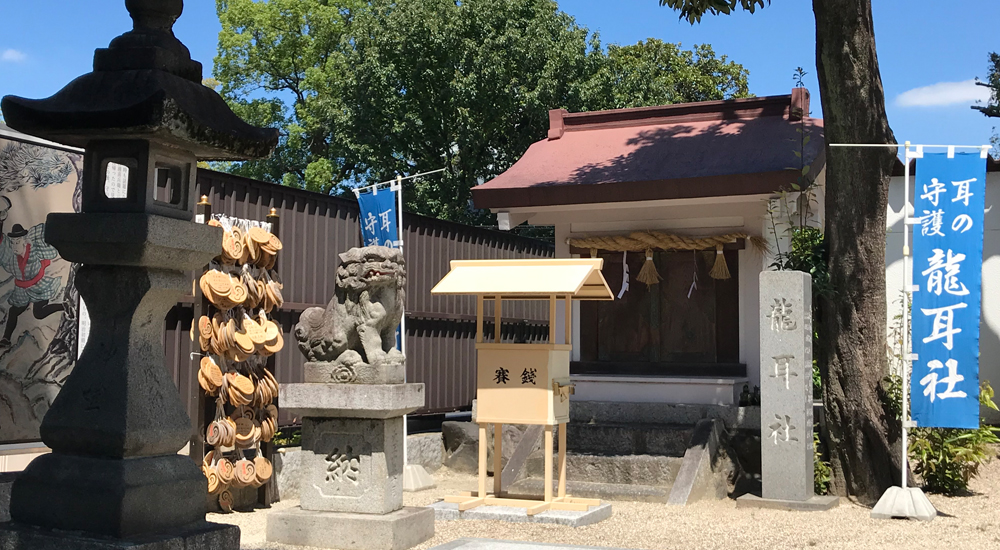
Ryuji-sha Shrine
This shrine enshrines a snake with ears as a deity, whose life was spared after being caught. This event happened over a hundred years ago and appeared in a newspaper at that time. The deity is held to have the divine power to cure ear disorders.
Rokusho Shrine
Legend has it that, hearing a baby crying in a forest and going there to investigate, a villager found a young couple holding a baby. The couple vanished shortly afterward, a mystery that led to rumors that they may have been deities. This is how an annual festival started to be held for safe child delivery on February 26, the date of their disappearance. Every year, the festival attracts many visitors who gather to obtain colorful candies that represent umbilical cords.
Galaxy
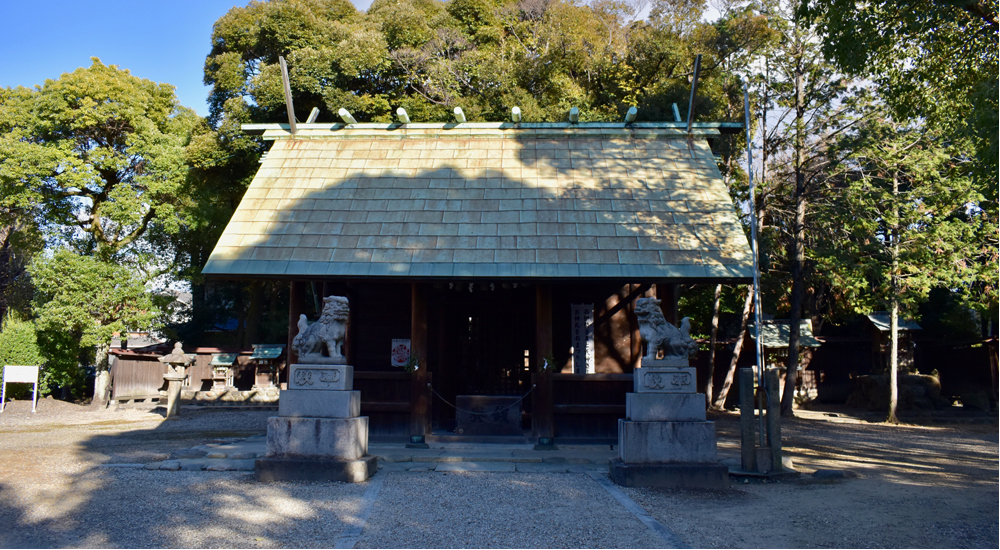
Yobitsugi Shrine
This shrine enshrines a meteorite, or “star stone,” that fell from space on this area. A picture depicting a scene of people surrounding the meteorite is preserved in an ancient document in Nagoya.
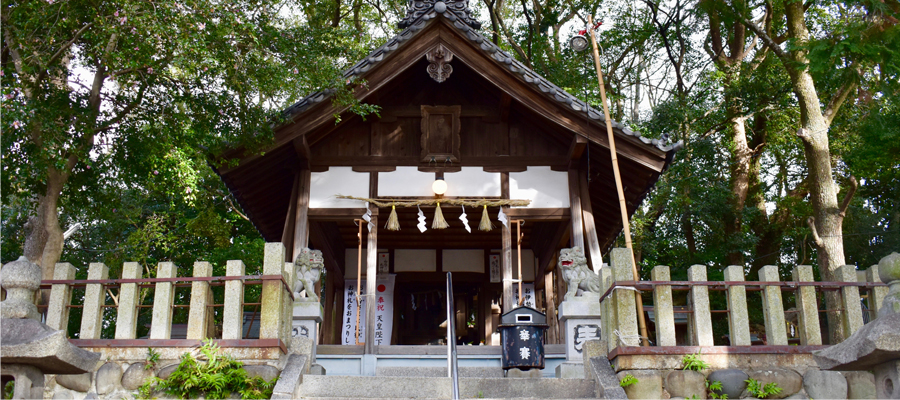
Hoshimiya-sha Shrine
This shrine was founded according to a divine oracle received at a time that seven stars (presumed to be the Big Dipper) fell from the sky. (There are various theories about its origin.)
GOOD LUCK
A complete collection of behaviors that attract good luck
Shinsui
-
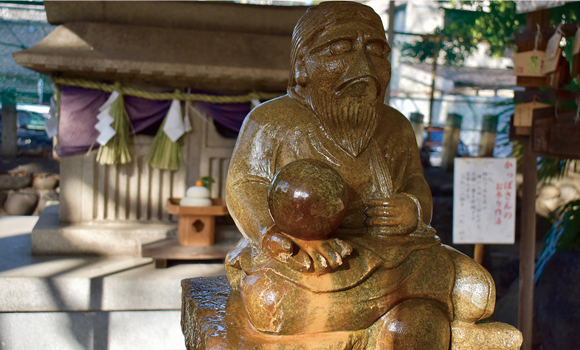
Shiogama Shrine
Pour water three times over the head of a kappa, an imaginary creature with a cavity called a “sara” (dish) on top of its head, and your prayers will be answered.
-
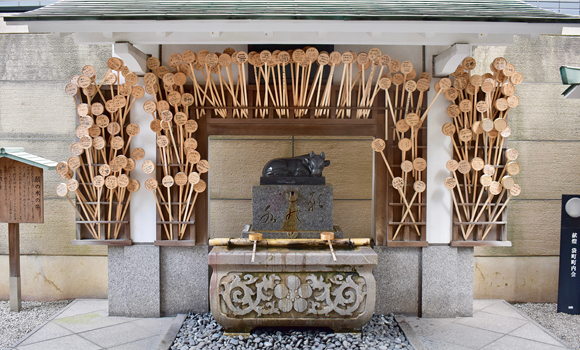
Sakura Tenjin-sha Shrine
Pouring shinsui/jinzui, water offered to deities, over the cow deity as many times as your age will grant you your wishes.
-
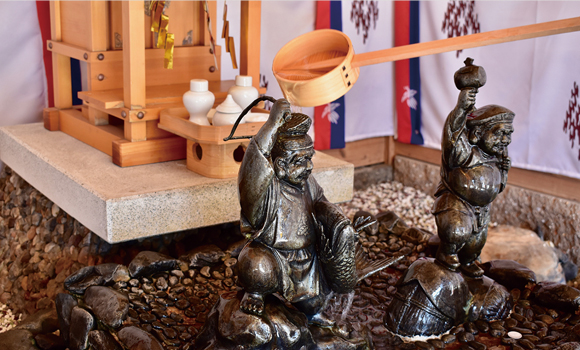
Kogane Shrine (in the grounds of Yamada Tenmangu Shrine)
Pour shinsui/jinzui water three times each over Ebisu on the left and Daikokuten on the right as you face them, who are both among the Seven Deities of Fortune. Next, pour the water flowing out from under their feet over your money, and your economic fortune will improve!
-
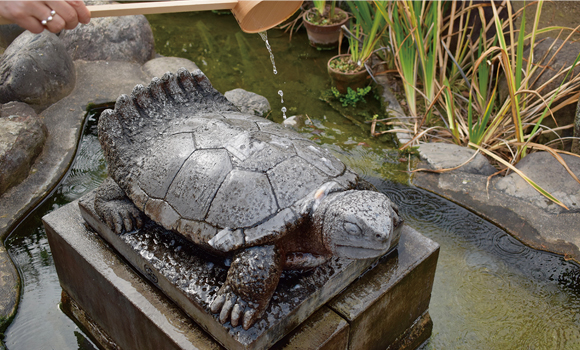
Nanao Tenjin-sha Shrine
Place a piece of paper with your prayers written on it on the back of the turtle with seven tails (“nanao” means seven tails), and pour water over the paper. When the paper dissolves in the water, that is a sign that your prayers have been heard by the deity.
-
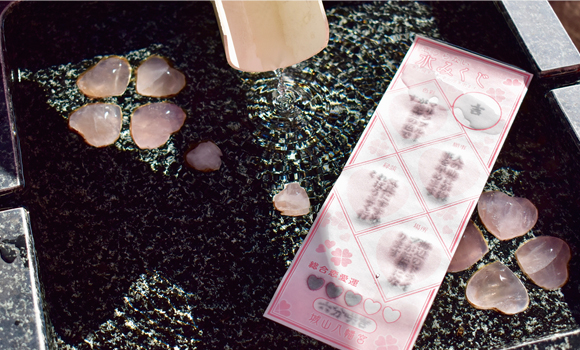
Shiroyama Hachimangu Shrine
Rose quartz is a power stone that soothes the soul. Immerse koi-mikuji, a love fortune-telling lot, in the water-filled basin arranged with rose quartz, and characters will appear, telling your love fortune. Omikuji related to matters other than love are also available.
Stroking
-
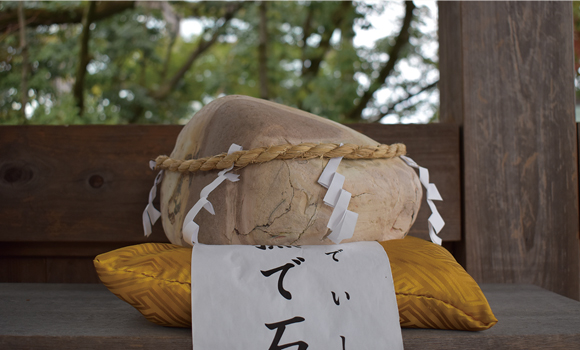
Gosha-gu Shrine
The shrine has a natural stone called “nade-ishi,” or stroking stone, in front of the hall of worship. Stroking the stone will render your prayers for economic fortune and safe child delivery more powerful.
-
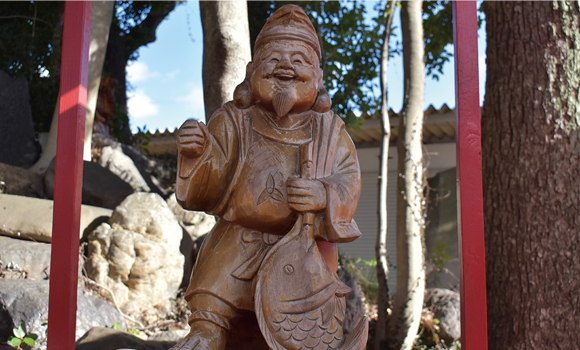
Wakeoe Shrine
Stroke the head, belly and legs of the Ebisu deity statue and then lift him up, and you will be blessed with good fortune.
-
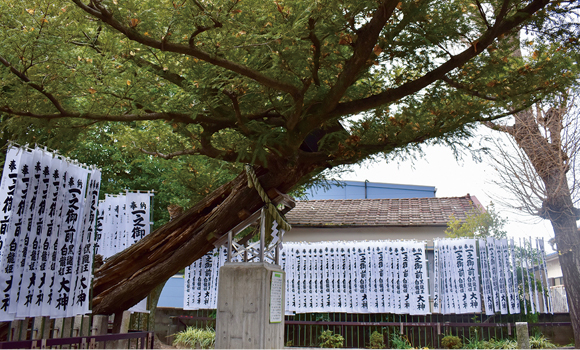
Ichino Gozen-sha Shrine
Visit to worship the sacred tree where Kokuryu Ou (Black Dragon King ) and Hakuryu Hime (White Dragon Princess) dwell, and touch the tree with your hand and then the affected area of your body―a procedure believed to help cure illness.
-
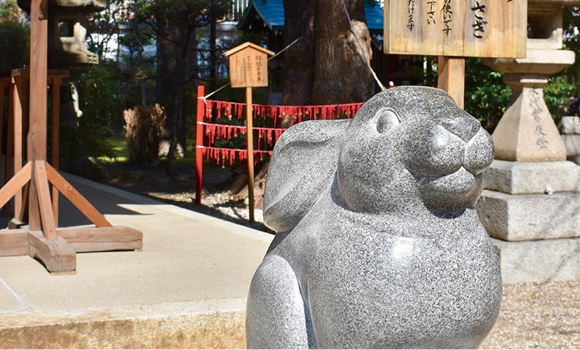
Miwa Shrine
The cute nade-usagi, or stroking rabbit, helps you recover from illness.
Tying
-
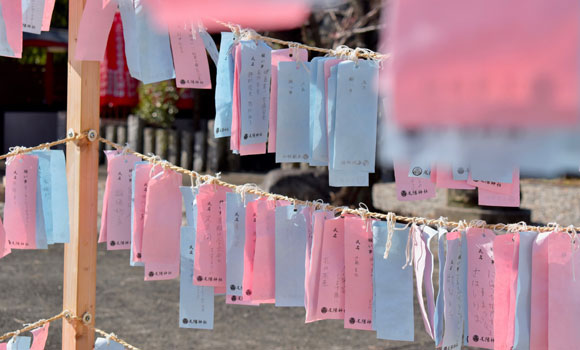
Biyo Shrine
This shrine is dedicated to the lords of Nagoya Castle, the symbol of Nagoya City. The ceremony is held in the New Year (in January), involving tying paper wish slips onto a hemp cord. The beautiful view created by pink and light blue wish slips swaying in the wind is worth seeing.
-
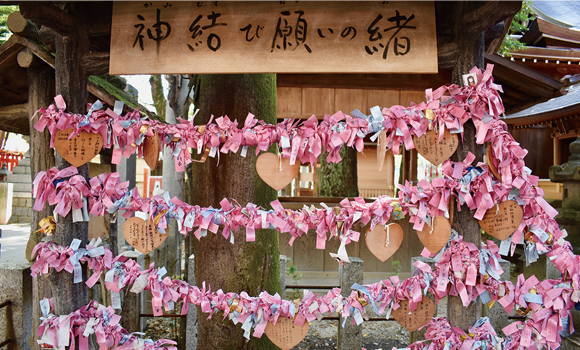
Wakamiya Hachiman Shrine
According to legend, tying pink and light blue wish ribbons called negai-no-o to a dedicated place means your prayers will be answered.
-
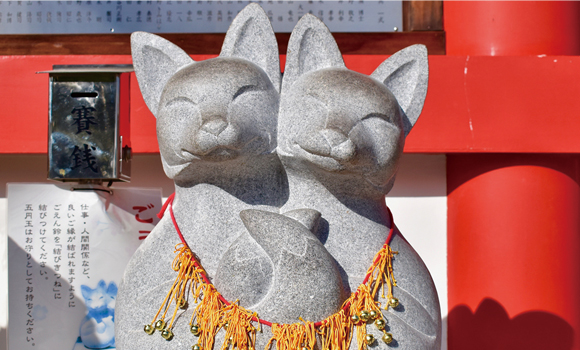
Ikutama Inari Shrine
Purchase a goen-suzu (literally, “relationship bell,” meaning a bell that brings good luck in relationships) at the shrine office and tie it to a musubi kitsune, a “relationship-forming fox couple.” You may take home the five-yen coin that comes with the bell as an omamori amulet. (The term for “five yen” in Japanese is “goen,” which has the same sound as that for “relationship.”)
Direction
-
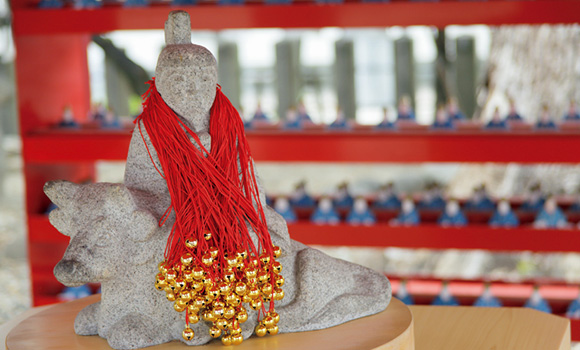
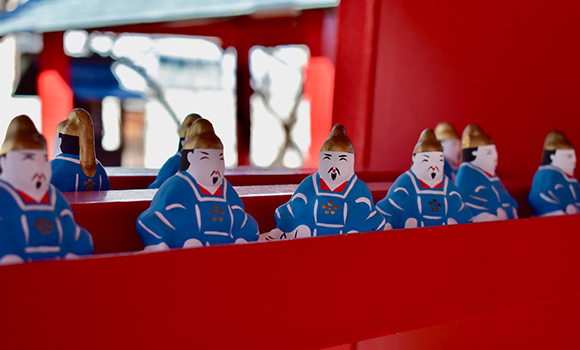
Yamada Tenmangu Shrine
Turn the cow’s face in the direction of the place related to the wish that you hope will be granted, and then hang a wish bell around the neck of the deity on the cow.
The papier-mâché deity must be returned to the shrine after your wish has come true.
Walking
-
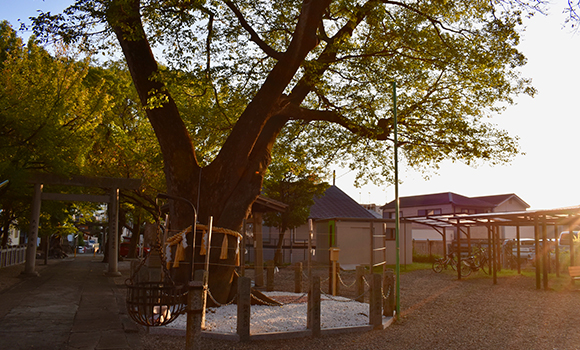
Tako Hachiman-sha Shrine
These two trees support each other, and hence are called “wago-no-ki,” meaning “trees in harmony.” By walking around them seven-and-a-half times, you will be blessed with children.
-
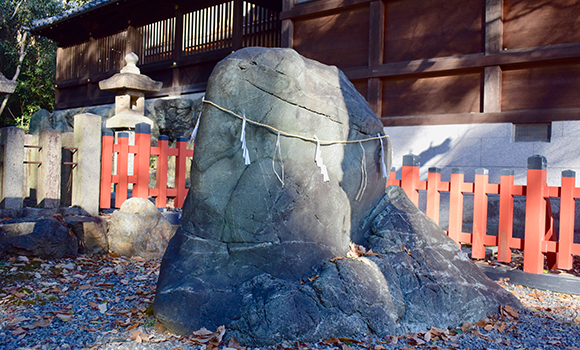
Shiroyama Hachimangu Shrine
Make a wish while touching the blue stone and walk toward the red stone with your eyes closed. If you reach it with a single try, your dearest wish will be fulfilled. Reaching it after trying a couple of times suggests that your dearest wish will be fulfilled through persistent effort. If someone gives you a hand to reach it, you will be able to fulfill your wish with someone’s help.
Lifting
-
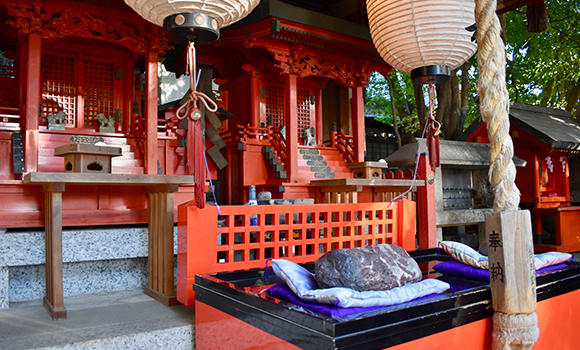
Hakuryu-sha Shrine (in the precincts of Gokiso Hachimangu Shrine)
The purple omokaru-ishi is said to not only aid the granting of your wish but also to reduce your pain when stroked.
-
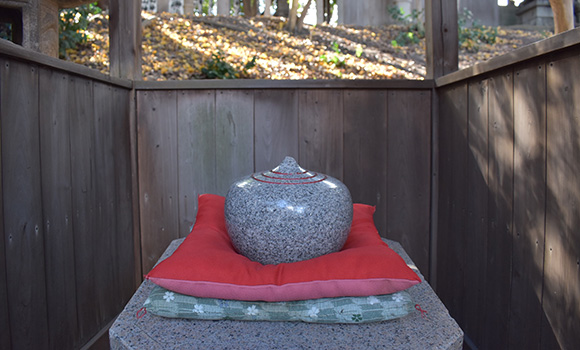
Ofuku Inari-sha Shrine
A rare stone in the shape of a mani hoju (wish-fulfilling jewel).
-
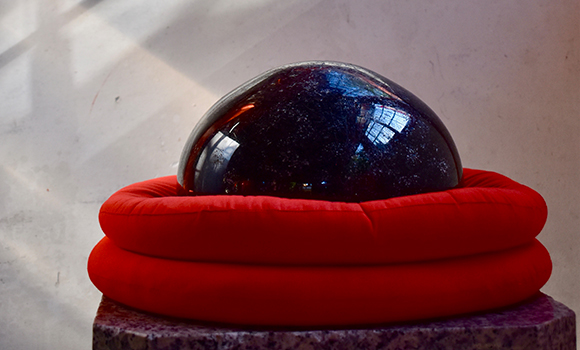
Tamanushi Inari Shrine (in the precincts of Inu Shrine)
A shrine dedicated to a deity for prosperous business.
Resonating
-
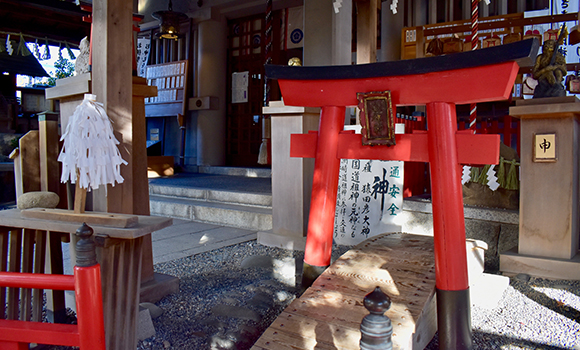
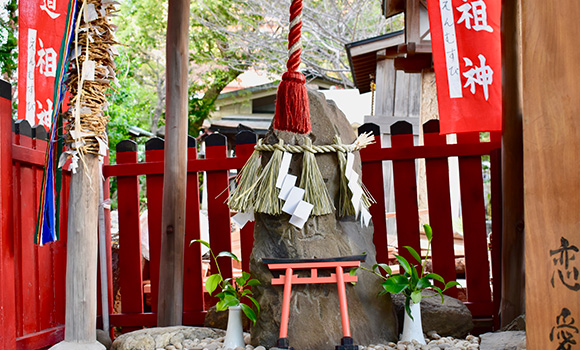
Susaki Shrine
Wave a haraegushi, or purification wand, to the left, right and left again, pass through the small torii gate, and ring the bell. Proceed to Ishigami, the stone deity, located at the side of the approach to the shrine. Hang a dedicated loop with your paper wish slip attached around the pole to which a five-color cloth is tied, and ring another bell there. The resonating sounds of the two bells are the charm that will form good relationships.
Looking
-
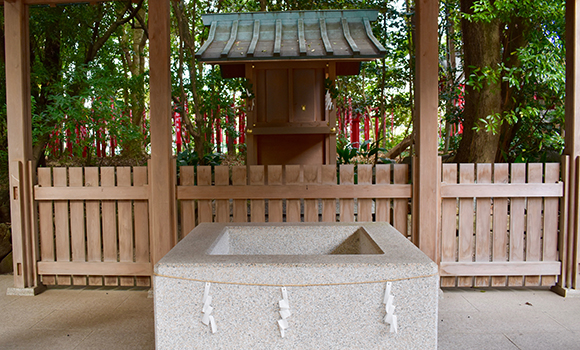
Takakura-musubi-miko Shrine
According to legend, children will stop being mischievous after they look into the well where Ryujin-sama, the dragon deity, lives.
-
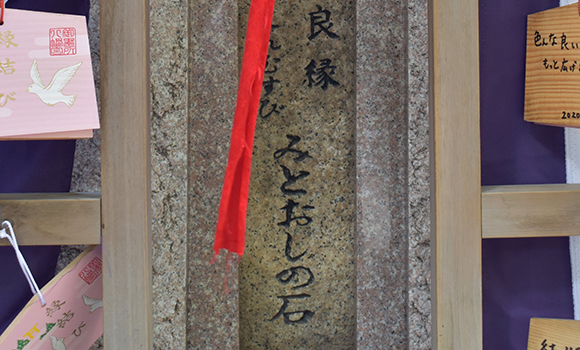
Gokiso Hachimangu Shrine
After praying to find a good partner and looking through the hole in the mitooshi-no-ishi, or “looking-through” stone, you will then be able to foresee your future.
Offering
-
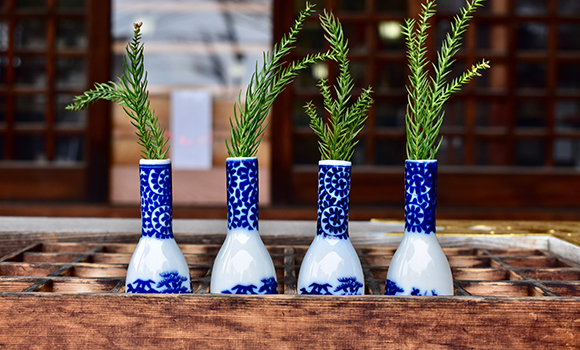
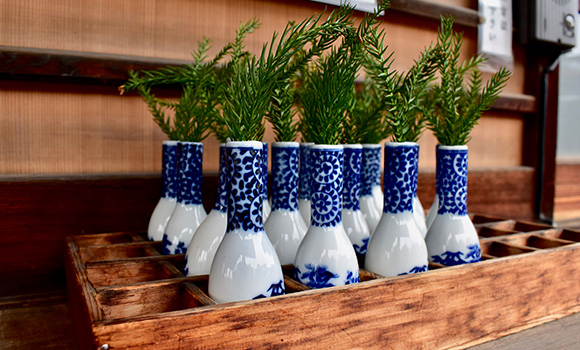
Katayama Hachiman Shrine
Visitors may make offerings before the altar, allowing them to worship the deity more fervently. The hatsuho-ryo (the money offered to shrines) can be offered in any amount you think appropriate as a token of gratitude.
Tapping
-
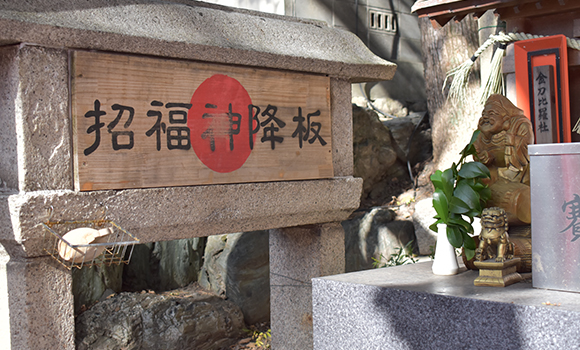
Wakeoe Shrine
Tap the wooden board with the mallet to bring good luck. The sound produced will draw the attention of the deity, who will then listen to your prayers.
Goshuin
Ema・Omamori
Goshuin (stamped proof of your visit to the shrine) that is considered to embody your respect for the deity; ema (votive picture tablet) that conveys your prayers to the deity; and omamori (amulet) through which you will be bestowed with divine favor.
All of these items are gracious gifts from the deities.
In ancient Japan, whose culture was centered around rice farming, people offered harvested rice to the deities to express their genuine gratitude. Cash offered at shrines is called "hatsuho-ryo" (literally, "first rice harvest of the year"), representing a relic of this ancient custom. So, receive such gifts with gratitude to the deities.





